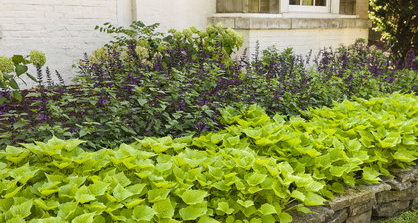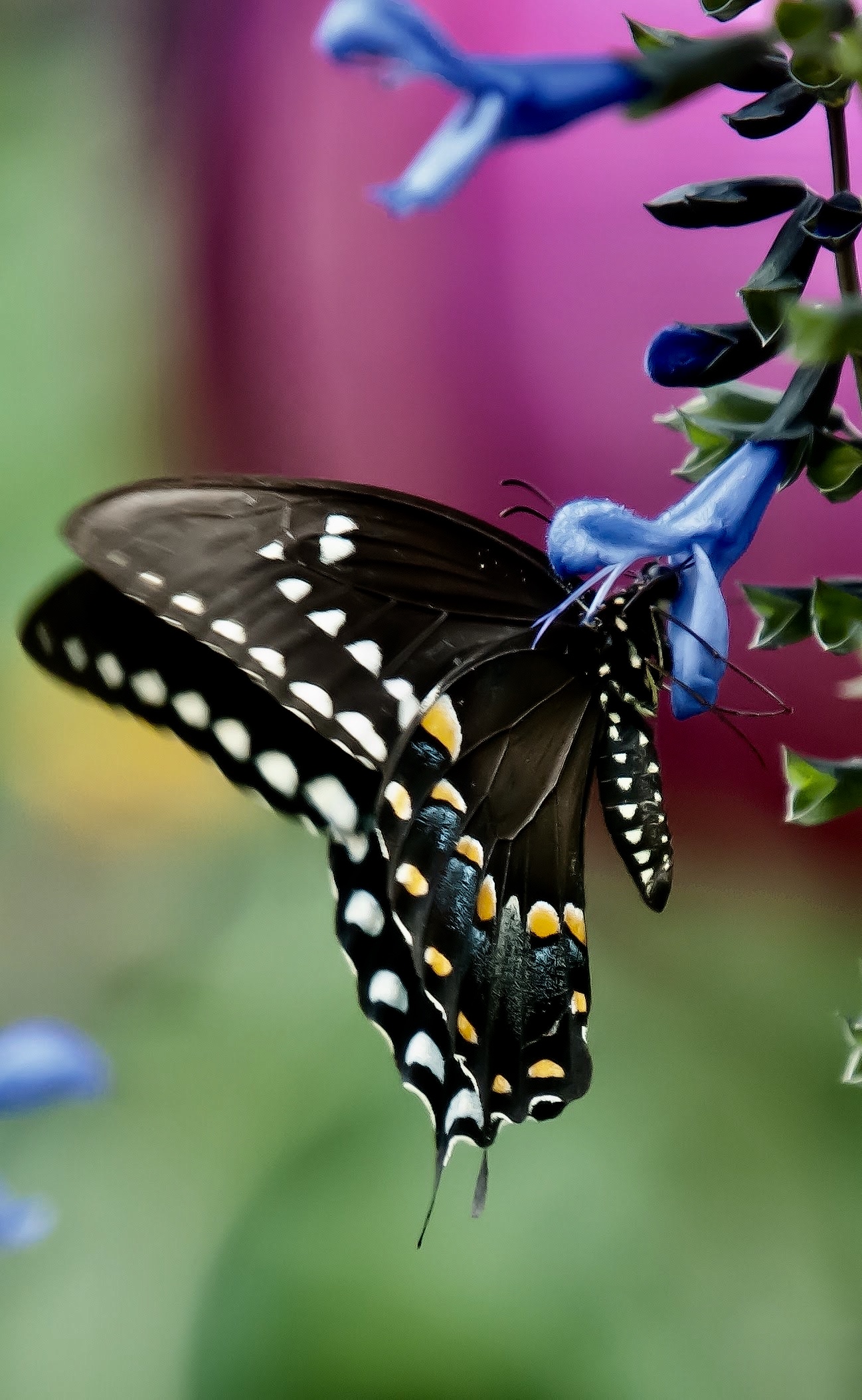Will My Salvia Survive the Winter?
Many gardeners ask us about how to overwinter their Proven Winners salvias. Plants that are so vigorous and grow so large in a single season seem like they might be durable enough to survive the winter, but will they? The answer is a little more complex than you might think. Here’s the low down on overwintering all of our salvias.

Every fall, we receive a number of questions from gardeners who would like to know how to overwinter their Proven Winners salvias, especially those in our Rockin’® and Unplugged® series. It’s not surprising since it seems like plants that are so vigorous and grow so large in a single season might be durable enough to survive the winter. The answer is a little more complex than you might think.
In the plant world, Salvia is a huge group of plants that includes both hardy and non-hardy species, spring and summer bloomers, those that are just a foot tall and others that can grow to be shoulder height. Plant breeders come up with new varieties by crossing different species to obtain selections with unique traits like a never-before-seen flower color or a longer bloom time. These complex crosses make it more difficult to predict the cold hardiness of new salvias, even among varieties that look very similar. We learn more about their hardiness with each passing winter. Sometimes those we don’t predict will be hardy actually do overwinter. When this happens, it’s a bonus!
We offer both annual and perennial types of salvias in the Proven Winners lineup. Rockin’ and Unplugged salvias are generally considered to be annuals since they are expected to overwinter only in warm climates. People typically plant them in spring, compost them in late fall, and replant the following spring. By contrast, Color Spires® and Profusion salvias are very cold hardy plants (down to zone 3, -40°F). Plant them once and they will return every year.
Since perennial salvias don’t require any special care to overwinter easily, we’ll focus here on how to overwinter Rockin’ and Unplugged salvias. If you aren’t sure what hardiness zones are or to find what zone you live in, it may help to read this article first.
Overwintering ALL Rockin’ and Unplugged Salvias in Zones 9-11
In the warmest climates like Florida, parts of California and southern Texas where it never freezes, Rockin’ and Unplugged salvias grow like perennials. Their growth slows down during the coolest months of the year, at which time you can shear them back a bit to reshape the plant and encourage fresh growth. Once it warms back up and the days get longer, the plants should start to bloom again. No other special maintenance is needed to overwinter these types of salvia in zones 9-11.

Overwintering Rockin’ Playin’ the Blues, Proven Accents® ‘Golden Delicious’ and Unplugged So Blue Salvias in Zone 8
If you garden in zone 8, Rockin’ Playin’ the Blues, Proven Accents® ‘Golden Delicious’ and Unplugged So Blue salvias will likely overwinter for you. These varieties are a bit more cold tolerant than the others in these series, so they act as perennials and return the following year. Like in warmer zones, they will slow down during the winter, which is a good time to shear back any tattered foliage to reshape the plant. They will begin to flower again once the weather warms up. As with any borderline hardy plant, it’s a good idea to mulch around the roots in fall for added protection.
 Overwintering Rockin’® Playin’ the Blues® Salvia in Zone 7
Overwintering Rockin’® Playin’ the Blues® Salvia in Zone 7
As the most cold hardy plant in the Rockin’ series, Playin’ the Blues typically survives the winter in zone 7 (as low as 0°F). Expect the plant to go dormant for the winter and return the following spring. It’s a good idea to mulch around the roots to provide added protection from the cold. All other Rockin’ and Unplugged salvias will not likely overwinter in zone 7.
General Recommendations for Overwintering Non-Hardy Salvias
The simplest thing you can do with a salvia that is not hardy in your zone is to pull it out at the end of the season and plant a fresh one in the spring. That said, we understand how many passionate gardeners want to try their hand at getting these plants to make it through the winter where they might be marginally hardy. If you think you are up to the challenge, this next advice is for you.
1 - If your salvia is growing in a container, plant it in the ground by early fall.
Plants typically overwinter far more reliably in the ground than in containers, especially if you live in a cold climate. Find a sheltered location outdoors where the plant will be protected from the winter wind and where the soil is well-drained. Winter wetness is often the reason why marginally hardy plants don’t survive the winter. Trim the plants back substantially to 4-8” tall—they do not need their foliage during the winter and will regrow in spring.
Once the ground is frozen, apply a thick layer of winter mulch around the plant’s roots. This article explains the importance of using mulch. Winter mulch helps the soil maintain a more consistent temperature which can prevent the plants from heaving out of the ground during freeze/thaw cycles. Planting your salvia in the ground early enough in fall to give the roots some time to anchor in also helps to prevent heaving.

2 - If you must keep your non-hardy salvia in a pot for winter, read this first.
Plants overwintered in containers are far more susceptible to cold damage over winter. To increase your chances of success, use a large, thick-walled container (like glazed ceramic) that will hold plenty of soil to help insulate the roots.
To survive winter in a container, your plant should be two zones hardier than the zone you live in. For example, to overwinter a zone 7 hardy Rockin’ Playin’ the Blues salvia, you’ll need to live in zone 9. That fact alone explains why overwintering non-hardy salvias in containers is such a challenge in cold climates.
Move your potted non-hardy salvia into a garage or shed where it is cold but not freezing. This kind of sheltered space can earn you an extra zone or two of cold hardiness, meaning it may be as cold as zone 7 outside but it’s more like a zone 8 in your garage. Trim the plants back substantially to 4-8” tall—they do not need their foliage during the winter and will regrow in spring. Keep the soil moist, but not wet, through the winter. This article explains in more detail how to overwinter potted plants.
3 - Moving Your Non-Hardy Salvia Back Outside in Spring
Once the temperatures start warming up in spring and risk of frost has passed, it is safe to move your salvia back outside to a sunny spot. Don’t worry if the plant looks dead at first. Perennials often die back to the ground in winter and resprout from the ground in spring.
Once new growth begins to appear, mix some Proven Winners continuous release plant food into the soil around the roots. Do not use water soluble plant food in early spring because you don’t want to encourage lush, soft new growth which could be easily damaged by a late cold snap. Allowing the plant to regrow more slowly will be better for it in the long run. After it has re-emerged substantially and the weather is consistently warm, you can start using water soluble plant food if you prefer it.
We wish you luck in overwintering your favorite non-hardy salvia. If it doesn’t work out, remember that local garden centers stock these plants every year for your convenience.

Rockin’ and Unplugged Salvia Hardiness
- Rockin’® Blue Suede Shoes™ – hardy in zones 9-11
- Rockin’® Deep Purple – hardy in zones 9-11
- Rockin’® Fuchsia – hardy in zones 9-11
- Proven Accents® ‘Golden Delicious’ – hardy in zones 8-11
- Rockin’® Playin’ the Blues® – hardy in zones 7-10
- Unplugged® So Blue™ – hardy in zones 8-10
Learn More:
Watch this video about Hardy Salvia.
Explore the full range of our salvia collection.
Browse this Pinterest Board of Drought Tolerant Plants.
Winter Gardening Ideas & Tips




